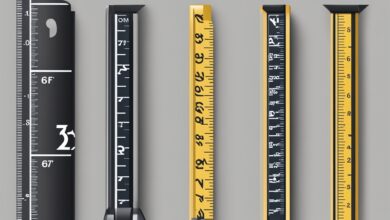Ultimate How-To Guide For Outdoor Extension Cord Usage

Outdoor extension cords are convenient for places where your electrical outlets are out of reach. They can withstand harsh weather conditions and serve you anywhere.
Due to this, you can use these extensions to power all your projects that require electricity. However, using them can pose severe safety hazards. You can prevent the risks from hindering you from powering your devices. In this ultimate guide, you will learn how to use your extension cord safely.
1. Choose Cords Suitable for the Outdoors

Outdoor extension cables serve a wide variety of purposes. Use one that perfectly meets your needs to minimize the risks. Safety is your most vital requirement.
One way you can ensure safety and efficiency is by checking the labeling. Look for phrases like “weatherproof” or “suitable for outdoor use” on the cord. You can also find it on the packaging. Manufacturers provide clear labeling to improve their customers’ experiences.
Moreover, look at the cable to ascertain whether it has weatherproofing features. You need an excellent outdoor extension cord that features reinforced insulation. It also comes with a waterproof cover. These elements ensure water cannot seep into your cord and cause damage. Besides, they can protect you from electrical hazards.
For a better result, also think about wattage. Ensure the cord can deliver the amount of power your appliances require. Large cables often offer more power than small ones.
Before making your decision, consider certification and local regulations. Choose a certified extension cable that meets the required industry standards. It should also adhere to local codes for outdoor usage.
2. Assess Your Outside Receptacle
The efficiency of your outside receptacle also determines your safety. Your cable should have a Ground Fault Circuit Interrupter or Ground Fault Interrupter (GFI). This safety outlet averts disastrous electrical accidents. It can help you to prevent short circuits and shocks that often cause deadly fires.
The GFI can prevent these accidents. It tracks the current flowing through circuits. Moreover, it detects loss of current. When the power fluctuates beyond the allowed limits, it immediately trips the circuit. Before using your extension cord, test your GFI’s functionality to ensure everyone is safe.
3. Ensure Proper Placement

Consider the safety of where you intend to place the cords. Choosing the appropriate cord and assessing your receptacle are excellent solutions. However, consider placement to reduce fall and tripping accidents.
Consider your situation before choosing the best place to put your extension cords. One possible solution is to plug the cord into an outlet with limited foot traffic. You can also avoid tripping accidents by staying away from walkways. In addition, you can avoid places where your children or pets play often. Additionally, stay away from areas that are near water or heat sources.
Once you’ve ascertained safety, push the plug into the connector. Push it in all the way. You may power on your system when the plug prongs are invisible.
4. Use the Best Maintenance and Inspection Solutions
Regular maintenance and inspection also ensure you get the best experience when using your extension cord. Remove the accumulated moisture, debris, and dirt from your cord’s jacket. Use a soft brush or dry cloth to do this. Moreover, inspect its connections regularly. Pay close attention to signs of corrosion. Besides, inspect it for loose terminals or tear and wear. As part of this process, ensure you clean and tighten the connections whenever necessary.
Moreover, you should test the cord continually. Use a continuity tester. It effectively verifies whether an extension cord conducts power properly. It can detect breaks and faults in the wiring, giving you an idea of the ideal solution.
Inspection allows you to correct numerous faults. It can expose significant damage or wear. So, it can help you to detect frayed insulation or severe faults in the wiring. When you notice these severe issues, consider replacing the cords. This option could be the best way to protect lives and safely power your systems.
5. Store Your Extension Cord Safely

Extension cords for outdoor use are resistant to the elements. However, many external factors can damage them. They have a lifespan like other electrical devices. Additionally, poor storage can reduce their efficiency.
Proper storage can help you to minimize these risks. Store your extension cords indoors. Ensure the store is cool and dry. Your garage can be an excellent store. Nonetheless, any cool and dry indoor facility can serve you.
When you are ready to store your extension cord, unplug it. Leaving the cables plugged can increase the risk of damage. Once you have used the cord, grab the extension cord plug’s head. Pull from there.
After unplugging the cord safely, prepare it for storage. Coil it. Since you want to avoid kinks and tangles, coil it loosely. Do not assume this method is perfectly safe. Check for signs of damage before plugging the extension cord into the system. Do this when it is the appropriate time to use the cord again.
Summing Up
Outdoor extension cords can help to power your electrical devices in many outdoor settings safely. Use cords that suit your outdoor needs to achieve this. Moreover, assess your outdoor receptacle and ensure proper placement to minimize fire risks.
Besides, use the best maintenance practices and store your cords safely. When armed with these tips, you can use outdoor extension cables to power your devices anywhere.

